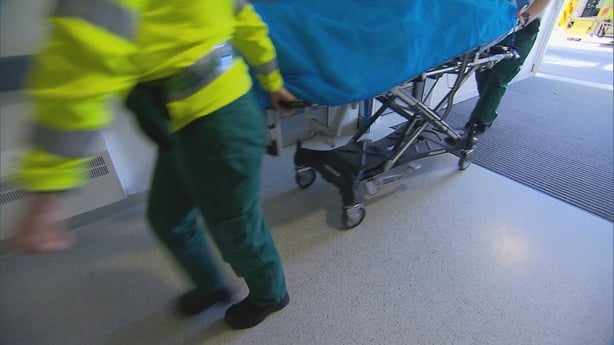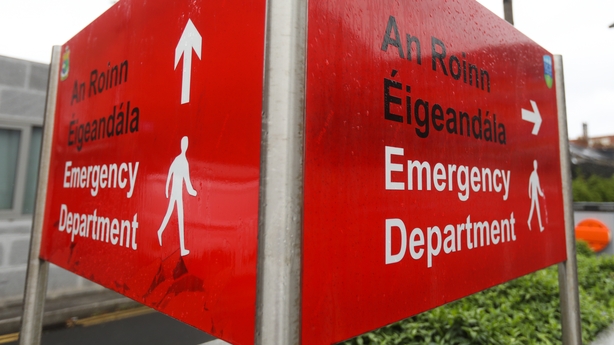Long delays in hospital emergency departments for admission to a bed are not new.
For patients, health staff, administrators and politicians they are a symptom of a long-running ailment within the hospital system.
The problem has been with us for decades and has challenged many different Governments and Ministers for Health.
It is 16 years since the then Minister for Health Mary Harney declared hospital overcrowding a "national emergency".
It is no longer a largely winter issue but can instead arise at any time.
The last few years had the unexpected added factor of Covid-19 which has contributed to the problems.
Fewer than one in three patients who attended hospital emergency departments last year were admitted to a ward within the HSE target time of six hours
Recently, the HSE has reported all time high attendances for people aged 75 years and older at hospital emergency departments.
These older people attending are sicker, frailer than before, and need a longer stay when admitted.
It is likely down to a mix of factors; demographic changes, delayed attendances due to a delayed impact of Covid-19, and people spending too long on waiting lists.

The latest data shows that last month, on average, the over-75s were waiting almost 14 hours for admission to a bed.
Some of the longest waits were at Cork University Hospital with some patients waiting 28.8 hours.
The funding for the health system is now the highest it has ever been at over €20bn a year.
But the population has also increased and it is an ageing population too.
The head of the HSE said today that the health service has seen one of its worst quarters, and that this has contributed to waiting times in emergency departments.
While there are many well-known factors at play, such long waits are simply unacceptable
Paul Reid said the health service was seeing a higher presentation of older people with more complex needs.
Figures published by the HSE earlier this year showed that for the week of 6 February there were 3,701 patients over the age of 75 who attended emergency departments.
It was the highest number recorded in recent years going back to pre-pandemic times.
Today, overcrowding in emergency departments was not as bad as it has been recently.
There were 384 patients waiting for a bed according to the Irish Nurses and Midwives Organisation.
The latest data on older people must be a concern, as we are heading into the summer months and this cannot be blamed on any winter peak.
The new figures also show that for some of the most vulnerable people, HSE waiting targets are not being met.
Fewer than one in three patients who attended hospital emergency departments last year were admitted to a ward within the HSE target time of six hours, the most recent national patient survey found.

The Irish Hospital Consultants Association said that with patients facing waits of nearly 14 hours in Emergency Departments, for some it will mean a deterioration of their conditions and seriously reduced health outcomes.
It insists that the answers are well-known; more beds, consultants, and resources.
The HSE said it has to prioritise, treat and care for the sickest of patients first.
It means that patients with less serious conditions may have to wait longer.
It also says that any delays in assessments, investigations, treatments and the decision to admit, can create bottlenecks in emergency departments.
The patient flow in an emergency department is complex and includes: registration, triage (deciding how urgent the patient's condition is), a nursing assessment, an assessment by a consultant or a registrar, consultations, tests, treatments and then a decision on whether or not to admit.
Another factor is the availability of inpatient beds or beds in the community.
A large number of beds in hospitals may be taken up by patients who are ready to be discharged but, for various reasons, cannot be as there is no where yet suitable to send them to.
Of course a key point to make is that for the over-75s in this latest report on waiting times for admission, in all cases the doctors deemed the patients ill enough to require admission to a bed.
But there were none available at the time and they had to wait.
While there are many well-known factors at play, for patients - especially older patients - such long waits are simply unacceptable.
